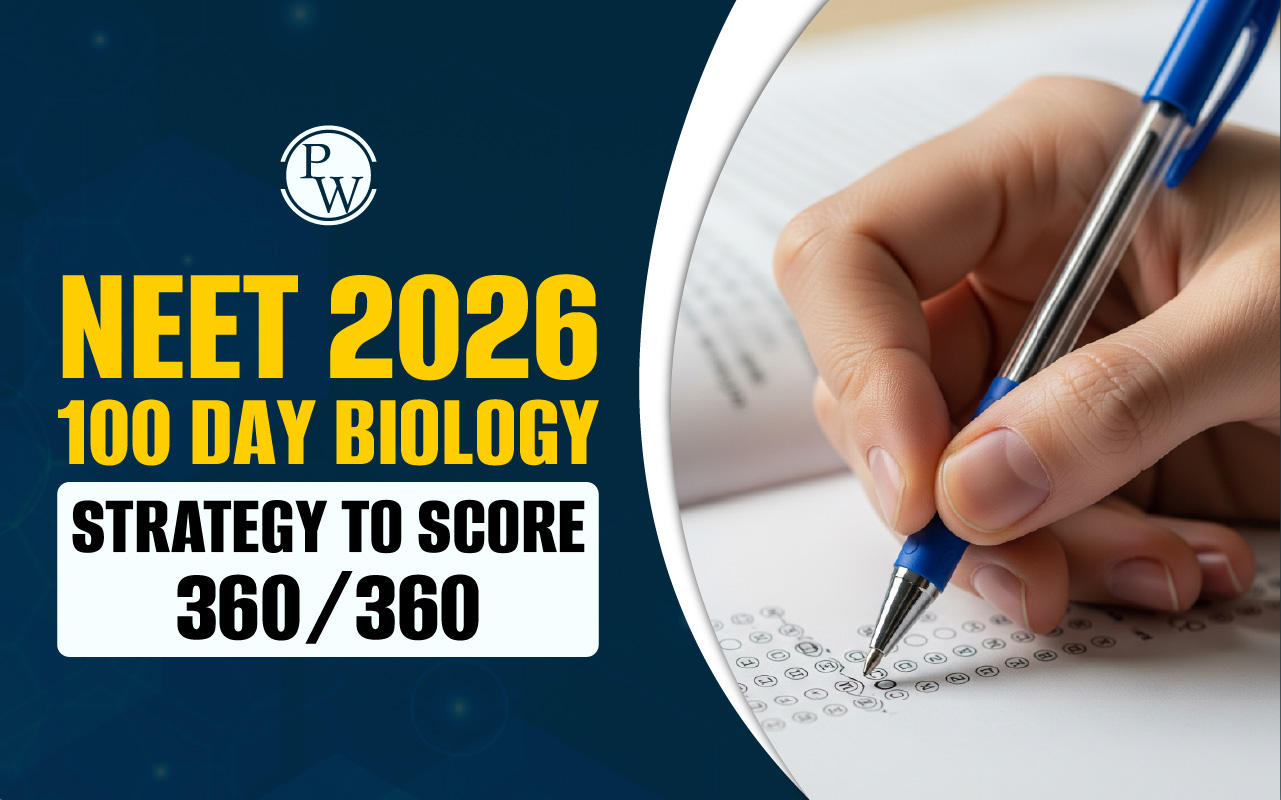
Sycon : Sycon, a marine sponge widely found in shallow waters, belongs to the Phylum Porifera. Typically, these sponges are attached to shells and rocks, and they are mostly stationary. They are primarily found in temperate regions. There are approximately 5000 living species of sponges worldwide, which are classified into three groups based on the presence or composition of spicules or spongin. These groups are Calcaria, Hexactinellida, and Demospongiae. Below are the Sycon NEET Biology Notes .
Sycon Classification
Sycon, a type of sponge, is classified under the phylum Porifera. These organisms are simple multicellular animals that lack true tissues and organs. Sycon sponges have a unique body structure characterized by a central body cavity called the spongocoel, which is lined with choanocytes, cells with flagella that create water currents to filter food particles. The classification of Sycon sponges is based on their body structure and reproductive features. They are classified as follows:| Sycon Classification | |
|---|---|
| Kingdom | Animalia |
| Phylum | Porifera |
| Class | Calcarea |
| Order | Leucosolenida |
| Family | Sycettidae |
| Genus | Sycon |
| Species | Various species within the genus Sycon |
Sycon Habit and Habitat
Sycon is a type of marine sponge that inhabits shallow waters worldwide. These creatures are mostly stationary, attaching themselves firmly to solid surfaces for their entire lifespan. Sycons can exist individually or in colonies.Habitat
- Sycons are commonly found in shallow waters, usually not exceeding 150 meters in depth.
- They typically attach to solid substrates such as rocks, shells, and coral reefs.
- They thrive in areas with gentle water currents and low tide conditions.
- Some species can even be found growing on seaweed.
Habit
- Sycons are filter feeders, drawing water in through small pores in their body wall and extracting food particles like plankton and bacteria.
- The water flow is facilitated by flagella, which are hair-like structures lining the canals within the sponge.
- Sycons reproduce through both sexual and asexual means.
Sycon Structure
Sponges exhibit considerable diversity in form, ranging from simple to complex structures. They can be broadly classified as intermediate in terms of structural complexity. These organisms are composed of branched cylinders that are firmly attached at one end to a base, which remains anchored to a substrate. Despite their flexibility, the bodies of sponges are securely anchored. Close examination reveals the presence of numerous small Ostia or inhalant pores. At the free end of each cylindrical branch is an opening at the summit known as an osculum. These structures are surrounded by calcareous monaxon spicules or oscular fringes, which prevent foreign substances' entry. Below the osculum, the body narrows to form the collar region. The body surface features elevations that give rise to spicules (oxeotes), imparting a bristled appearance.Sycon Characteristics
Sycon, a genus of marine sponges from the family Sycettidae, is notable for its simple yet intriguing characteristics. Here's an overview of some key aspects of Sycon:Physical Characteristics:
- Sycon sponges typically exhibit a tubular shape, featuring a single opening at the top and microscopic pores along the sides.
- Their size varies by species, ranging from 1 to 3 centimeters in height.
- Sycon sponges commonly appear in hues of white, cream, or yellow.
- These sponges are predominantly found in shallow temperate waters worldwide.
- They tend to attach themselves to rocks, coral reefs, and mollusk shells for stability.
- A distinguishing feature of Sycon is its unique canal system, which enables water flow for feeding and waste removal.
- Water enters through small surface pores and flows through canals lined with specialized choanocytes.
- Choanocytes with flagella that beat continuously draw in water and capture food particles.
- The filtered water exits through a larger opening at the top, the osculum.
- Sycon sponges possess a skeleton comprising microscopic spicules, which may consist of calcium carbonate or silica. These spicules provide support and structure to the sponge's body.
- Sycon sponges reproduce through both sexual and asexual means.
- In sexual reproduction, sperm are released into the water column, fertilizing eggs within other sponges.
- Asexual reproduction can occur through fragmentation, where a fragment breaks off and develops into a new individual.
- Sycon sponges play a crucial role in marine ecosystems by filtering large volumes of water, removing particles, and contributing to water quality maintenance.
- They also serve as a food source and shelter for various marine organisms.
Sexual Reproduction in Flowering Plants
Sycon Canal System
Sycons possess a distinctive canal system that is exclusive to them, consisting of water channels within their bodies. The body of a Sycon is a structured network of canals and pores, forming this unique system. The predominant canal type in Sycon is the Syncoid Stage I type, which is more advanced than the asconoid canal system. In this system, the Ostia lead to a central cavity through a network of canals. This central cavity within the body is known as the spongocoel. The canal system comprises several key components:- Ostia: These are dermal pores lined with thin membranes, with two openings for entry and exit. Myocytes regulate the opening and closing of Ostia for water flow.
- Spongocoel/Paragastric or Gastral Cavity: The osculum leads to a large central canal, the spongocoel, surrounded by myocytes acting as sphincters. These cells are contractile and control the opening to the outside through the osculum.
- Radial Canals: These are extensions of the body wall, closed at the outer end and open at the inner end, connecting to the spongocoel via the excurrent canal.
- Incurrent Canal: This tubular structure is located between two successive radial canals, alternating in arrangement. Ostia are situated on the pore membrane, controlled by contractile myocytes acting as sphincters to regulate the openings.
- Prosopyles: These are tiny pores located between the radial and incurrent canals, serving as intercellular channels through which incurrent canals open into radial canals, lined by pinacocytes.
- Apopyles: These openings of the radial canals into the spongocoel are surrounded by contractile myocytes.
Sycon Respiration
Sycon, a variety of sponge, employs a straightforward yet effective method for respiration known as diffusion. Unlike more complex organisms with specialized respiratory organs like lungs or gills, sponges exchange gases directly between their cells and the water that continuously flows through their bodies. The process works as follows:- Water Flow: Small pores on the sponge's outer surface, called ostia, permit water entry. Specialized collar cells (choanocytes) with flagella rhythmically draw water into a system of canals within the sponge.
- Oxygen Diffusion: Oxygen dissolved in the water diffuses directly into the sponge's cells as the water flows through. This oxygen is crucial for cellular respiration, the process by which cells convert glucose into usable energy (ATP).
- Carbon Dioxide Removal: Cellular respiration generates carbon dioxide as a byproduct. This carbon dioxide simply diffuses out of the sponge's cells and into the water current, which exits through another set of pores (oscula).
Sycon Nutrition
Sycon, a marine sponge species, obtains nutrients through a unique process that differs from typical notions of "nutrition" in living organisms. Unlike creatures with mouths and digestive systems, Sycon relies on a sophisticated water flow system to capture tiny food particles. Sycon acquires its nourishment:- Water current delivery: The sponge's body is covered in small pores called ostia. Water containing microscopic food particles like plankton and bacteria enters through these pores.
- Filter feeding: Specialized collar cells called choanocytes line internal chambers. The flagella on these cells create a current that pulls water through, trapping food particles on their sticky collars.
- Intracellular digestion: Choanocytes engulf the food particles. Digestion occurs inside these cells, breaking down the food into usable nutrients.
- Nutrient distribution: Once digested, the nutrients are passed on to other cells throughout the sponge's body.
Sycon Reproduction
Both sexual and asexual reproduction are observed in this organism. Asexually, they produce a bud, while in some instances, they produce special structures that resemble gemmules of freshwater sponges. In sexual reproduction, both ova and sperm are produced from archaeocytes found in the mesoglea. Sperm cells have long tails and swim freely in the water current, while the ova are amoeboid and move through the mesoglea. Sperm cells do not directly enter the ovum. Instead, when the sperm cells enter the radial canal, the nearest choanocytes to the egg capture them. The choanocyte that absorbs the sperm is the carrier cell, which ejects its flagellum and collar, approaching the egg. Over time, the sperm loses its tail and enters the egg. The earliest stages of development occur inside the mother sponge. Once the developmental stage is complete, the larva is released into the radial canal and then to the outside. Physics Wallah offers the online coaching for NEET class 11 , with high-quality instruction at an affordable price. Our courses are expertly crafted to help students excel in the NEET exam. We connect students with expert teachers who simplify complex concepts. Enroll Now!| NEET Exam Important Links | |
|---|---|
| NEET Syllabus | NEET Biology Diagrams |
| NEET Biology MCQ | NEET Biology Chapter wise Weightage |
| NEET Biology Notes | NEET Previous Year Question papers |
Sycon FAQs
What are the five characteristics of sycon?
Ans. Sycons are a type of marine sponge that belongs to the phylum Porifera. These organisms are tube-shaped and can grow up to 3 inches in height. They are typically white to cream in colour and are often found attached to shells and rocks. Sycons thrive in temperate coastal waters around the world.
Q 2. What is sycon and Scypha?
Ans. Sycon, also known as Scypha, is a genus of marine sponges belonging to the class Calcarea, which are characterized by a fingerlike body shape known as the syconoid structure.
Q 3. What are the unique features of sycon?
Ans. Sycon ciliata, a species of sycon, is creamy yellow in colour and delicate-looking. Their bodies are arranged in the asconoid system, a simple tube structure without folding of the outer body wall. They typically range from 1 to 3 cm in height and are covered in hairy, needle-like spines called spicules.
Q 4. Why is Sycon called Scypha?
Ans. Scypha, also known as sycon, is a genus of marine sponges belonging to the class Calcarea, hence referred to as calcareous sponges. They are distinguished by their syconoid body shape, which resembles a finger.
Q 5. What is the use of sycon?
Ans. Sycon Syrup is a combination medicine used to treat acidity, stomach ulcers, and heartburn. It helps relieve symptoms such as stomach pain or irritation caused by acidity and ulcers. Sycon Syrup also neutralizes excessive acid in the stomach and facilitates the easy passage of gas.
Talk to a counsellorHave doubts? Our support team will be happy to assist you!

Check out these Related Articles
Free Learning Resources
PW Books
Notes (Class 10-12)
PW Study Materials
Notes (Class 6-9)
Ncert Solutions
Govt Exams
Class 6th to 12th Online Courses
Govt Job Exams Courses
UPSC Coaching
Defence Exam Coaching
Gate Exam Coaching
Other Exams
Know about Physics Wallah
Physics Wallah is an Indian edtech platform that provides accessible & comprehensive learning experiences to students from Class 6th to postgraduate level. We also provide extensive NCERT solutions, sample paper, NEET, JEE Mains, BITSAT previous year papers & more such resources to students. Physics Wallah also caters to over 3.5 million registered students and over 78 lakh+ Youtube subscribers with 4.8 rating on its app.
We Stand Out because
We provide students with intensive courses with India’s qualified & experienced faculties & mentors. PW strives to make the learning experience comprehensive and accessible for students of all sections of society. We believe in empowering every single student who couldn't dream of a good career in engineering and medical field earlier.
Our Key Focus Areas
Physics Wallah's main focus is to make the learning experience as economical as possible for all students. With our affordable courses like Lakshya, Udaan and Arjuna and many others, we have been able to provide a platform for lakhs of aspirants. From providing Chemistry, Maths, Physics formula to giving e-books of eminent authors like RD Sharma, RS Aggarwal and Lakhmir Singh, PW focuses on every single student's need for preparation.
What Makes Us Different
Physics Wallah strives to develop a comprehensive pedagogical structure for students, where they get a state-of-the-art learning experience with study material and resources. Apart from catering students preparing for JEE Mains and NEET, PW also provides study material for each state board like Uttar Pradesh, Bihar, and others
Copyright © 2025 Physicswallah Limited All rights reserved.
Get App









